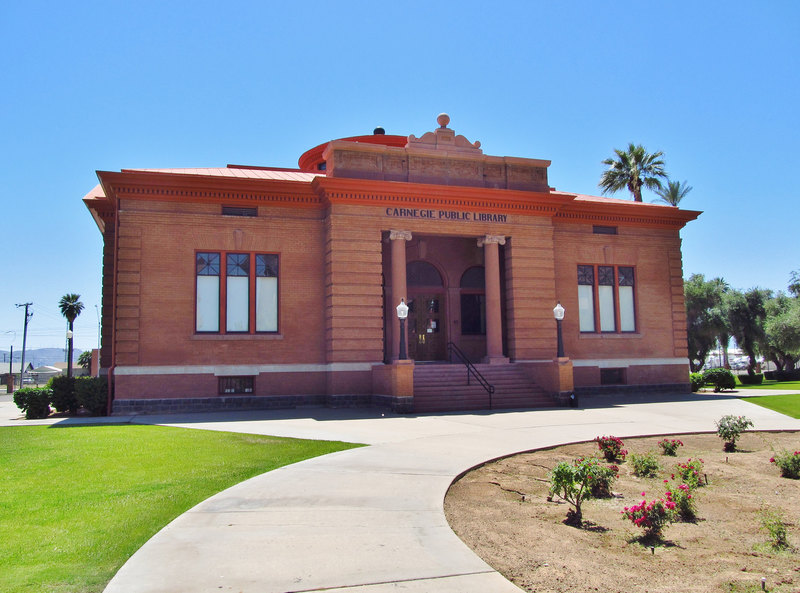Carnegie Library

Philanthropist and steel magnate Andrew Carnegie funded the building of almost half of the public libraries in the United States between 1883 and 1929. Included among the 1795 libraries by the"the patron saint of libraries" is the Phoenix Carnegie Library, located along Washington Street, not far from the Arizona State Capitol.
The Phoenix Carnegie Library opened in 1907 and was the city's only library until 1914. It serve as the main branch of the Phoenix Public Library until 1952, after which it has had many uses: senior center, storage building, administration building, homeless shelter, and museum. The building slowly deteriorated and was placed on the National Register of Historic Places in 1974. The building was restored in 1984, after which the state leased it from the City of Phoenix. It reopened as the Arizona Hall of Fame Museum, from 1987 through its closure in 2001. It's been used by the Arizona State Library.
Women reformers led the movement to create the library. The Friday Club--a group of twelve elite women--developed the first library in Phoenix late in the 19th century, as the population began to boom, growing from just over 3000 people in 1890 to a population of 5500 at the turn of the twentieth century. Reformers, including the Phoenix Women's Club, sought funding from Carnegie for the fledgling library. Following the formula laid out by Carnegie that required cities to underwrite the costs of the building site and paid staff, the reformers obtained a $25,000 grant from Carnegie.
Originally staffed by a small staff made up of a staff of women who worked ten-hour days, the organization grew dramatically. Within a decade, the number of books had increased nearly tenfold, as did the training and professional expertise of the staff. In 1917, the Phoenix Public Library began to add branches and expand outward with the city.
Made of red brick and twelve-inch walls, the structure has changed little since its construction, although the surrounding park has gradually given way to the desert climate. Originally, the building was flanked by large walnut trees, and there was a bandshell for concerts and speeches. The grounds also became a place for experimenting to see which plants and trees would thrive in the desert climate. Early photos show that shade trees eventually were supplanted by palms and a more open design, perhaps reflecting the harsh desert summers. Even the building underwent changes to accommodate the climate, including the use of fans and swamp coolers to maintain a comfortable summer temperatures.
Images







